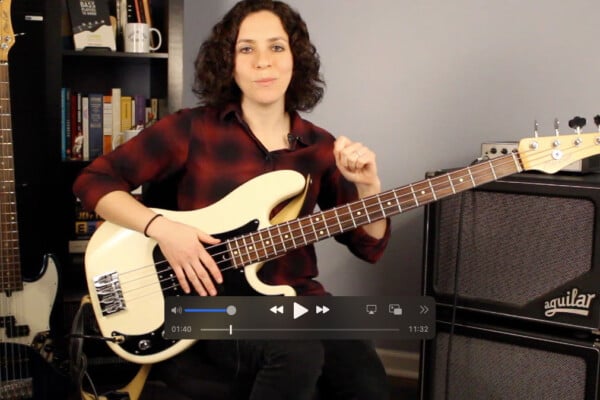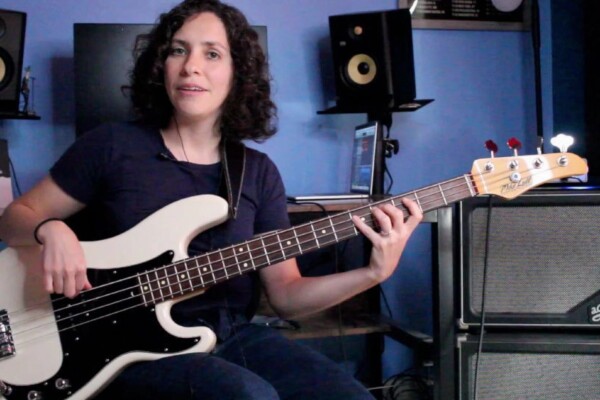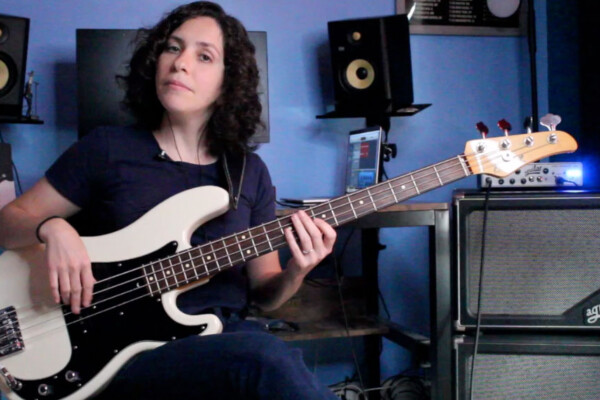Slow Blues: The Art of Making Each Note Count
The slow blues: a song that can last anywhere between 3 minutes and 30 minutes… depending on the guitar solos! For bass players, we’re challenged to keep our (and the audiences’) interest in the music and fuel the fire that makes the 30-minute rendition of “Red House” seem like something worth listening to. The style is particularly interactive, and if the band communicates as a unit, a slow blues has the capability of taking listeners on a journey through musical peaks and valleys, drawing attention to captivating vocals and expressive solos.
That said, slow blues tunes can put a lot of pressure on the bass player since the feel involves a lot of space, note sustain, and especially, note choice. In addition to firmly dictating the progression, you must communicate and play off of what the other band members are doing. Since they’re relying on you to provide a backdrop for soloing, what you contribute in terms of musical or emotional intensity will factor into their improvisation. In this column, we’ll break down a slow blues in a couple of ways: rhythm and feel, note choice, and working with dynamics. This will be geared toward a standard 12-bar progression, although the concepts are applicable to other slow blues.
Many slow blues tunes have a 6/8 feel and can swing or have a strong backbeat from the drummer. There are two common approaches to playing through the bass pattern: a slow, triplet feel by playing the first and third note of the triplet (like the shuffle) or a single, sustained note feel. The difference in feel doesn’t necessary influence the notes you play, rather how you play them. Listen to the drummer to hear which feel would be best and use your own discretion. You can also change up the feel in different parts of the song to coincide with the intensity of the soloist or vocalist. Try playing a punchier, well-defined note to emphasize the groove of the drummer if there’s a particularly driving section of the tune. Try playing the longer, sustained note feel during the solo section to “open up” the music. By understanding how your articulation and note duration can move the song along, you can influence the dynamic flow of the music.
For the slow blues bass line, use the “walking bass” pattern that we discussed in the shuffle feel column, but be aware of how you move through the arpeggio. Just as a reminder, those notes would be the 1 – 3 – 5 – 6 – 7 – 8 if you’re playing a major blues (C, E, G, A, B flat, and C in the key of C) and then you would move the pattern to the other chords in the progression. With a minor blues, you can take the same approach of outlining the arpeggio, thereby playing the root, flat 3rd, 5th, and flat 7th. Try to use voice leading to signal the movement of the song by identifying notes in one arpeggio that can lead seamlessly to the next chord. For instance, the 3rd of the I chord is a half step away from the 1 of the IV chord. This is a great leading tone since it defines the I chord and creates just enough tension to pull to the IV chord. Other good choices would be the 5th or the root of the I chord leading to the IV chord. You can find similar relationships between all of the chords in the progression and try to vary your leading notes throughout the song.
Incorporating chromatic movement is also a great way to give direction to the chord progression. The chromatic passing tone from the V to IV chord in the turn around is an easy way to transition, even though the note isn’t in either chord. Another common use of chromatic movement is playing 1 – 2 – #2 – 3 before landing on the IV chord or moving 4 – 6 ?7 7 and landing on the I. Since chromatic movement creates a strong pull to the following chord, it will have a greater impact if it’s used sparingly and if you can put it to work dynamically. If you’re tuned into what is going on in a solo or an intense verse, the placement of these chromatic moves along with a stronger and louder attack can truly drive the band.
Think about dynamics as being influenced by more than just volume; your note choice and feel contribute just as much. If everyone in the band is paying attention, you’ll be able to hear the dynamic movements of a solo or verse, even if the bandleader or soloist isn’t giving cues. If you’re lucky enough to play with a great soloist, listen to the story that is being told within the solo and think of how can pick up and enhance the intensity of the music. Also try to be on the same page with the drummer since he/she has an undeniably strong influence in how loud or soft the music can get… if they get louder, go along with it to create cohesion within the rhythm section, as long as it seems appropriate to what is going on. Save certain chromatic moves (such as the I to the IV chord) to create a very cool effect of heightened emotion at that part of the progression. If you play this line with more “umph,” not only does the music seem to get louder, but the ascending motion of the notes in your bass line will add an extra element to this climb in dynamics. This move will specifically feature the soloist and signal “something is happening!” to the audience. It is a great dynamic maneuver, especially if it’s followed by a sharp drop in volume at the climactic point of the solo.
Ultimately, in a slow blues, you want to keep the listeners’ attention and get them to focus on the story being told lyrically or in a solo. By understanding how to interact with the other players, you’ll keep the music interesting and “connect” on a greater level… you won’t be “just playing the song.” Also remember that there are other kinds of slow blues. Although this column only focused on a 12 bar form, you’ll stumble upon other chord progressions. You’ll be able to use the same kinds of dynamic maneuvers and rhythmic styles even though the chords are more varied. At the end of the day, it shouldn’t matter whether the song is 3 minutes or 30 minutes… if your focus is with the music, it will be a rewarding playing experience.
Ryan Madora is a professional bass player, author, and educator living in Nashville, TN. In addition to touring and session work, she teaches private lessons and masterclasses to students of all levels. Visit her website to learn more!




Don’t “funk it up”, stay home, and play big, fat notes.
http://www.youtube.com/watch?v=AY96gMvMDK0
Jeg er altså virkelig facineret af dit koncept – og sikke dog dine videoer har udviklet sig.
Tak min ven, DU ligger nu heller ikke på den lade side:-)
On 3-21-12 the light went on due to this article. Thanks Ryan
I grew up with some vocal talent and a passion to play an instrument…any instrument, but let a wide variety of issues keep from learning any of them well. I’m missing a ring finger on my left hand and became an amateur Bass player somewhat out of frustration. Now at 50, I’ve learned enough of the jargon to jam with the boys and even play a lot more guitar (cheating my way through some of the chords). I got about half-way through this article and realized I was following and understanding. With a mental image of the fret board, I was actually getting it. Better go play.
//…makes the 30-minute rendition of “Red House” seem like something worth listening to.// A challenge indeed.